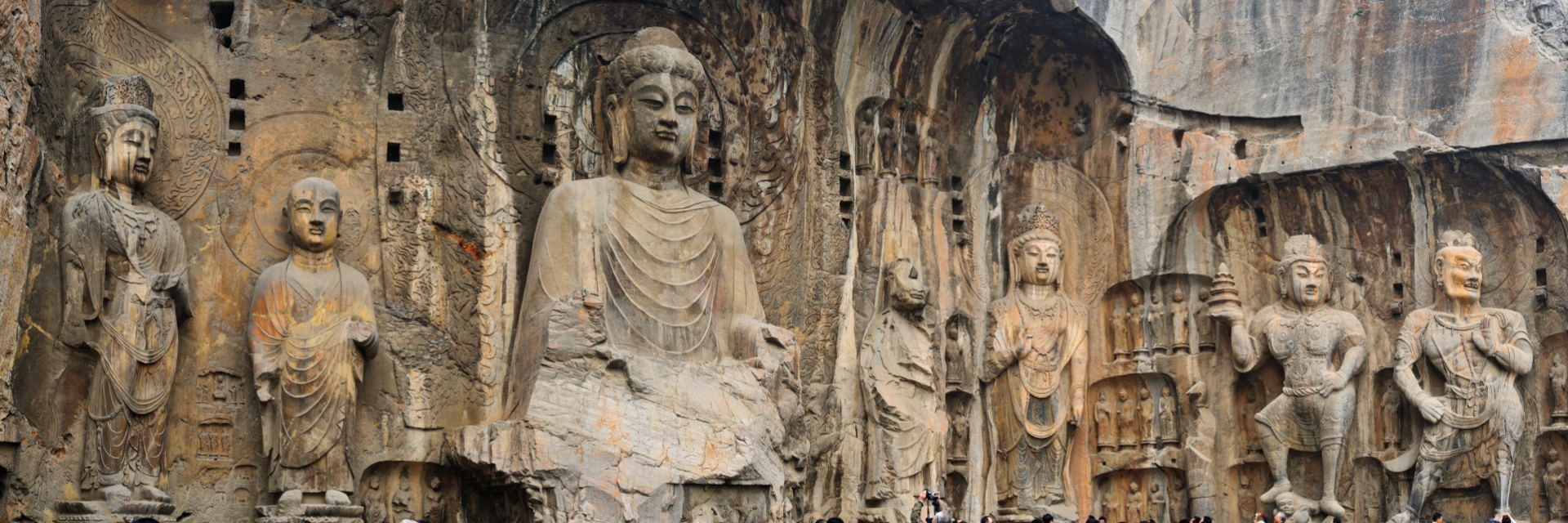
Luoyang Longmen Grottoes – Chinese Ancient Art Treasure
By Leo
Over the years, I’ve explored many of China’s hidden gems, and the Luoyang Longmen Grottoes left a lasting impression on me. This breathtaking UNESCO World Heritage site sits near the iconic White Horse Temple, just a few hours from vibrant Xian. In this guide, I’ll share what I’ve learned from my visits, along with practical tips to help you fully appreciate the intricate carvings, grand caves, and centuries of artistic achievement at Longmen Grottoes.
Key Facts About Luoyang Longmen Grottoes
The 17-meter-tall Vairocana Buddha is a standout in the Luoyang Longmen Grottoes, symbolizing the site’s grandeur. Each statue and inscription showcases the artistry and faith of ancient artisans and pilgrims. A must-visit for history and Buddhist art enthusiasts, it offers a glimpse into China’s rich cultural heritage.
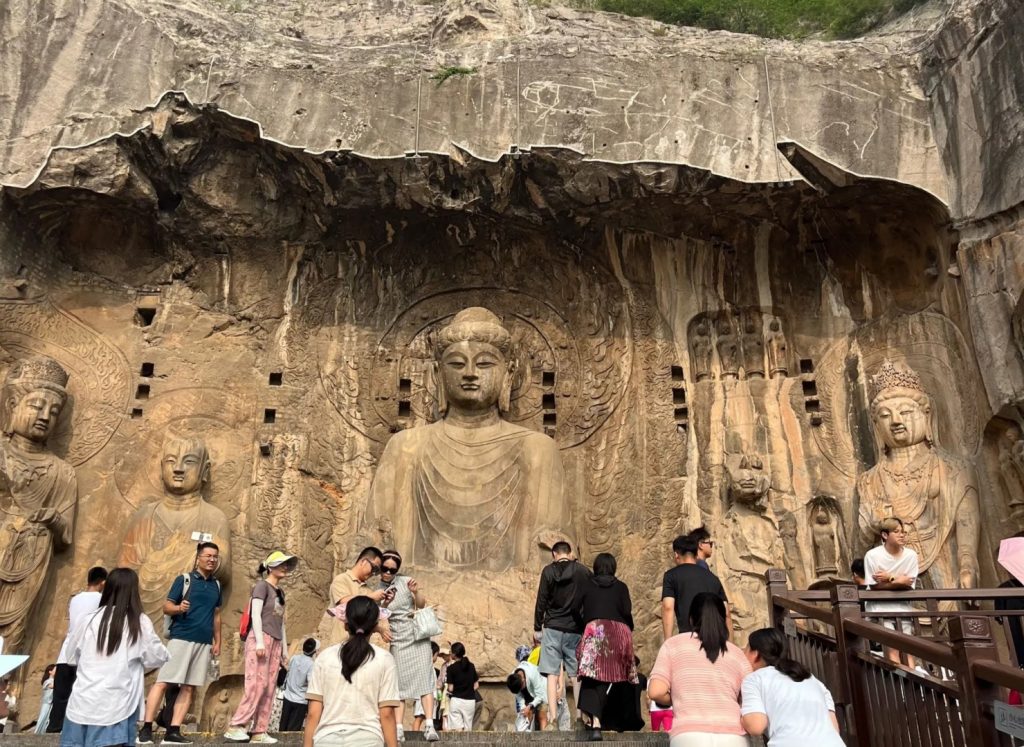
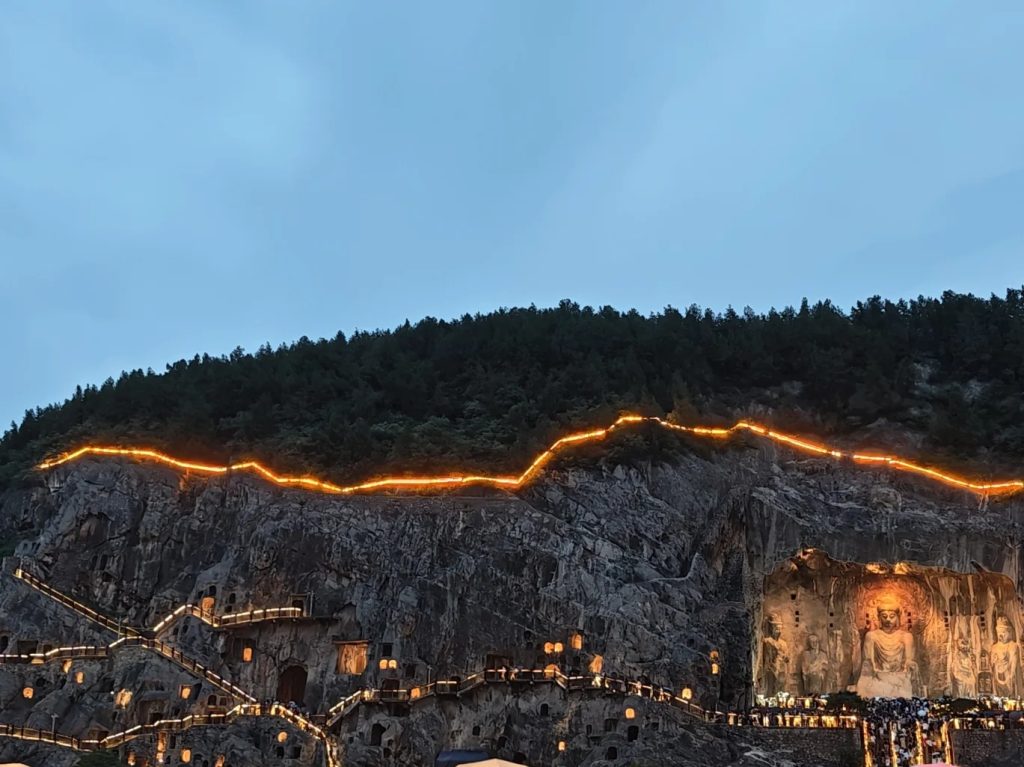
UNESCO Recognition: The Luoyang Longmen Grottoes are hailed by UNESCO as “a masterpiece of human creativity.”
Luoyang Longmen Grottoes History: For over 1,500 years, this site has been a beacon of Chinese Buddhist art and culture, carved between the Northern Wei and Tang dynasties.
Luoyang Longmen Grottoes Location: Located along the Yi River in Luoyang, China, this vast complex features over 100,000 stone statues.
Must-See Wonders of Luoyang Longmen Grottoes
The Longmen Grottoes are divided into two primary areas: the West Hill and the East Hill. Each offers unique perspectives and historical treasures. I recommend a specific route to maximize your experience and ensure you don’t miss any highlights.
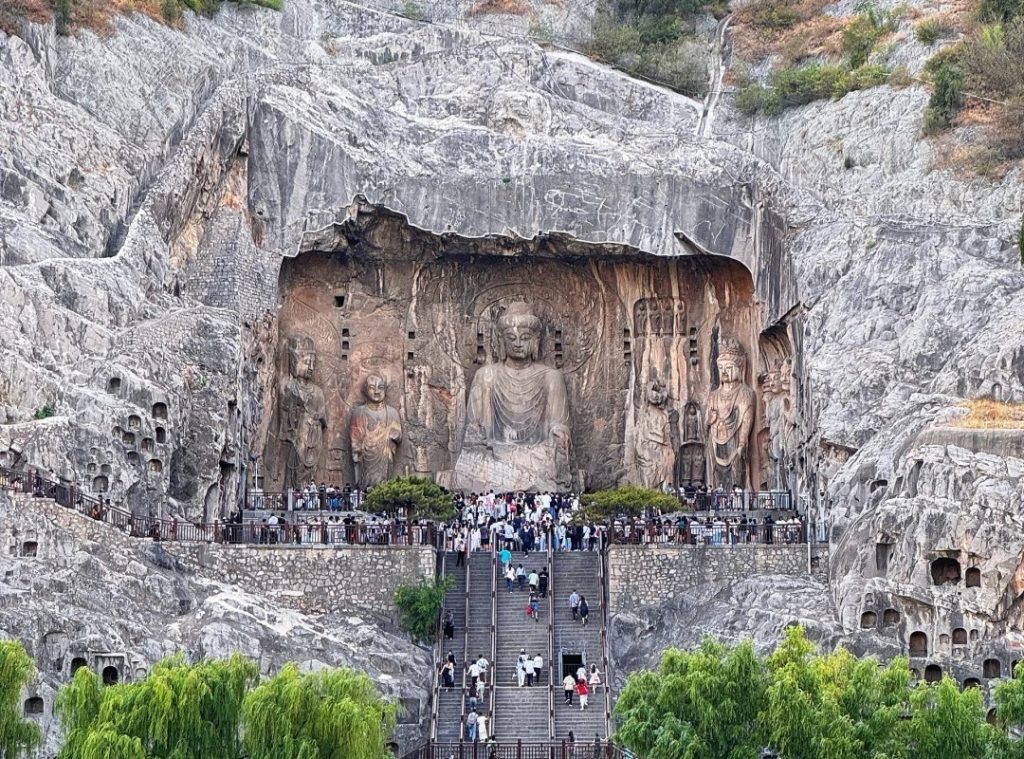
West Hill: The Heart of the Longmen Grottoes
Begin your journey at the West Hill of Luoyang Longmen Grottoes. This side is home to the oldest and most renowned caves, showcasing breathtaking artistry and historical significance.
- Fengxian Temple: Located in Luoyang Longmen Grottoes, this open-air shrine features the 17.14-meter-tall Vairocana Buddha, surrounded by disciples, bodhisattvas, and guardians. Its serene smile is a Tang Dynasty sculpture masterpiece.
- Wanfo Cave (Ten Thousand Buddha Cave): Known for thousands of tiny Buddha statues, Wanfo Cave offers a mesmerizing visual rhythm, making it a must-see in Luoyang Longmen Grottoes.
- Binyang Three Caves: Showcasing the transition from Northern Wei to Tang Dynasty art, these caves offer a blend of early elegance and later grandeur, reflecting the evolution of Buddhist sculpture.
- Guyang Cave: One of the earliest caves in Luoyang Longmen Grottoes, Guyang Cave is rich in early Buddhist carvings and inscriptions, offering a glimpse into the grottoes’ origins.
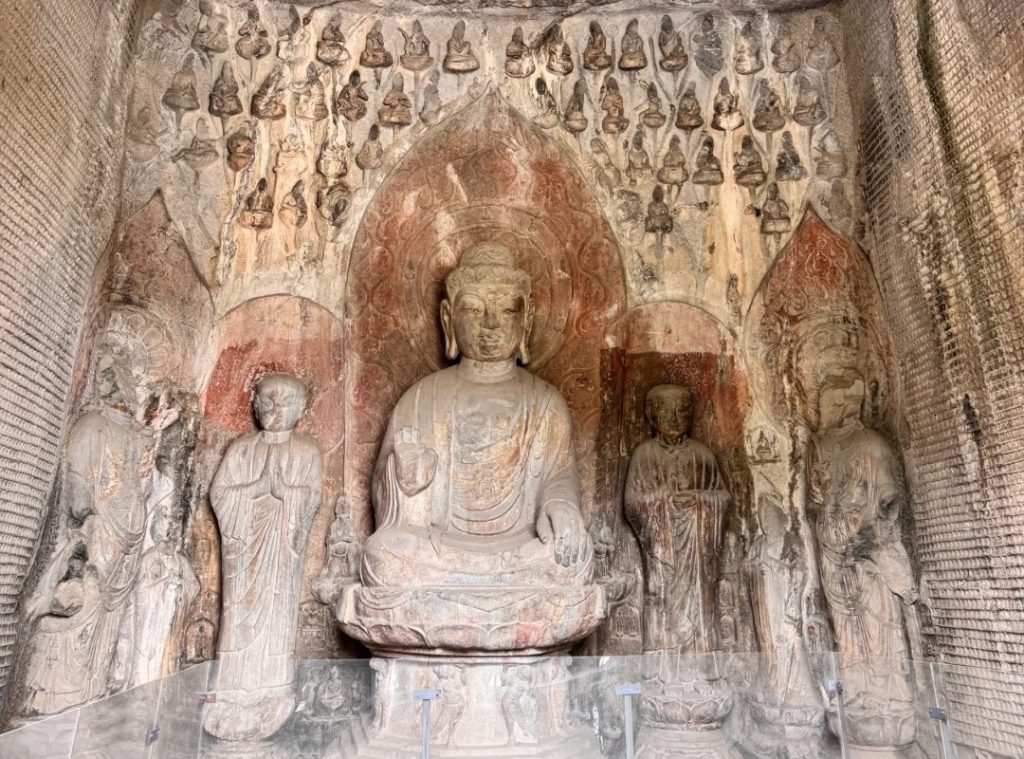
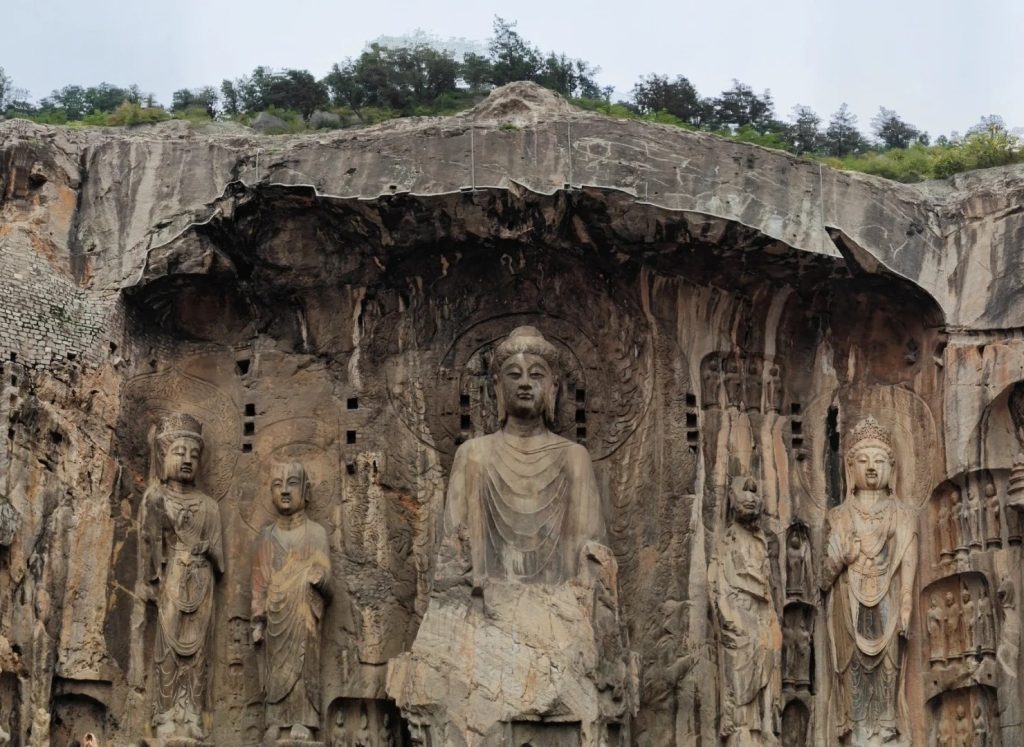
East Hill: Serenity and Panoramic Views
After exploring the West Hill, cross the Manshui Bridge over the Yi River to reach the East Hill. Quieter and offering stunning panoramic views of the West Hill grottoes, it’s a perfect spot for reflection and photography at Luoyang Longmen Grottoes.
- Xiangshan Temple: Situated on the East Hill, this serene temple offers breathtaking views of the entire Luoyang Longmen Grottoes complex and the peaceful Yi River below.
- Bai Garden: Adjacent to Xiangshan Temple, this garden honors Tang Dynasty poet Bai Juyi. It’s a perfect spot for a leisurely walk, surrounded by the natural beauty of Luoyang Longmen Grottoes.
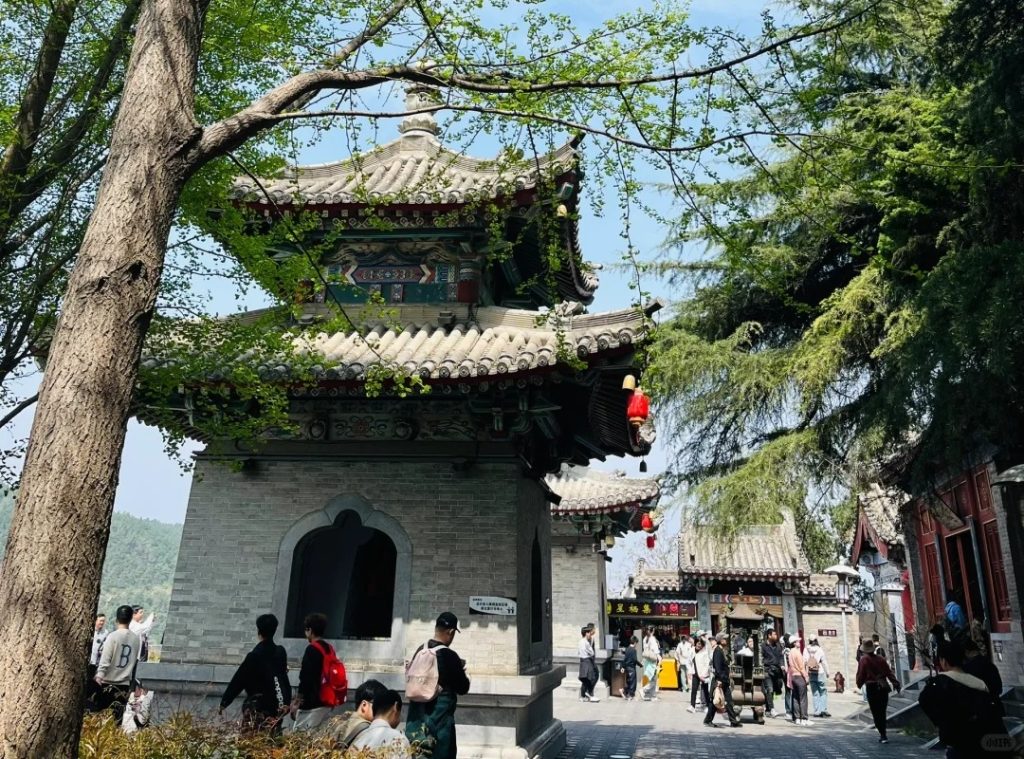
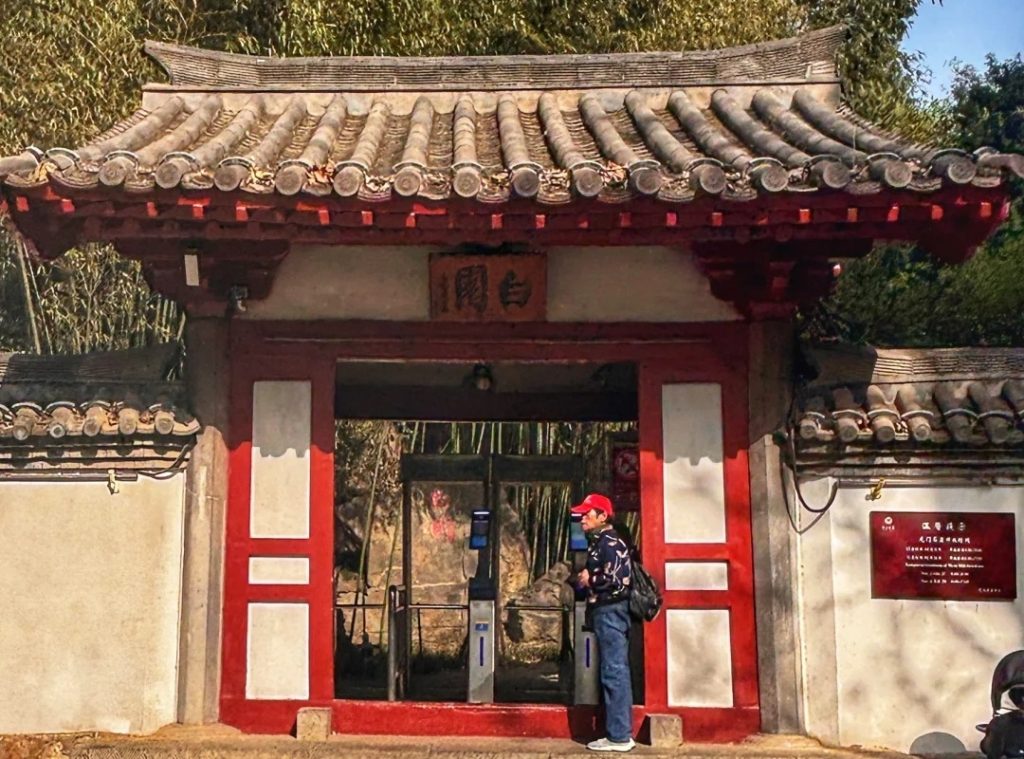
Beyond the Stones in Luoyang: Taste the Local Flavors
Exploring the Luoyang Longmen Grottoes isn’t just about stone carvings—Luoyang also offers a delicious journey through local flavors. From delicate peony-shaped dishes to hearty mutton soup, every bite reflects the city’s rich culinary heritage.
Peony Swallow Dish: Radish carved into blooming peonies floating in clear broth—legend claims Empress Wu Zetian praised it as “faux bird’s nest.” Tangy-spicy broth hides shredded sea cucumber, while heat makes petals unfurl like real flowers.
Jade Lion Heads: Translucent mandarin fish paste molded into lion heads, embedded with water chestnut “mane.” Steamed and glazed with chicken fat, served on bok choy leaves resembling jade.
Longmen Mutton Soup: Stone-carvers’ energy elixir! Goat bones boiled 6 hours into milky broth, topped with cilantro and chili-infused lamb oil. Rock-hard flatbread softens after 3-minute dunking, absorbing rich collagen.


A Practical Guide to Exploring Luoyang Longmen Grottoes
To ensure a smooth and enjoyable experience at Luoyang Longmen Grottoes, I’ve put together these practical tips to help you make the most of your visit:
Best Time to Visit Longmen Grottoes: Spring (March–May) and autumn (September–November) offer mild temperatures (15–25°C), vibrant scenery, and fewer crowds, ideal for exploring the grottoes comfortably.
How to Get to Luoyang Longmen Grottoes: Take high-speed rail to Luoyang Longmen Station, then use Bus 71/81 (15 mins) or a taxi; from downtown Luoyang, Bus 53/81 or taxis reach the grottoes in 20–40 minutes.
How Long to Spend at Luoyang Longmen Grottoes: Allocate 3–4 hours to fully explore the West Bank caves (main highlights), East Bank viewpoints, Xiangshan Temple, and Bai Juyi’s Garden; add 1 hour for a riverboat tour or photography.
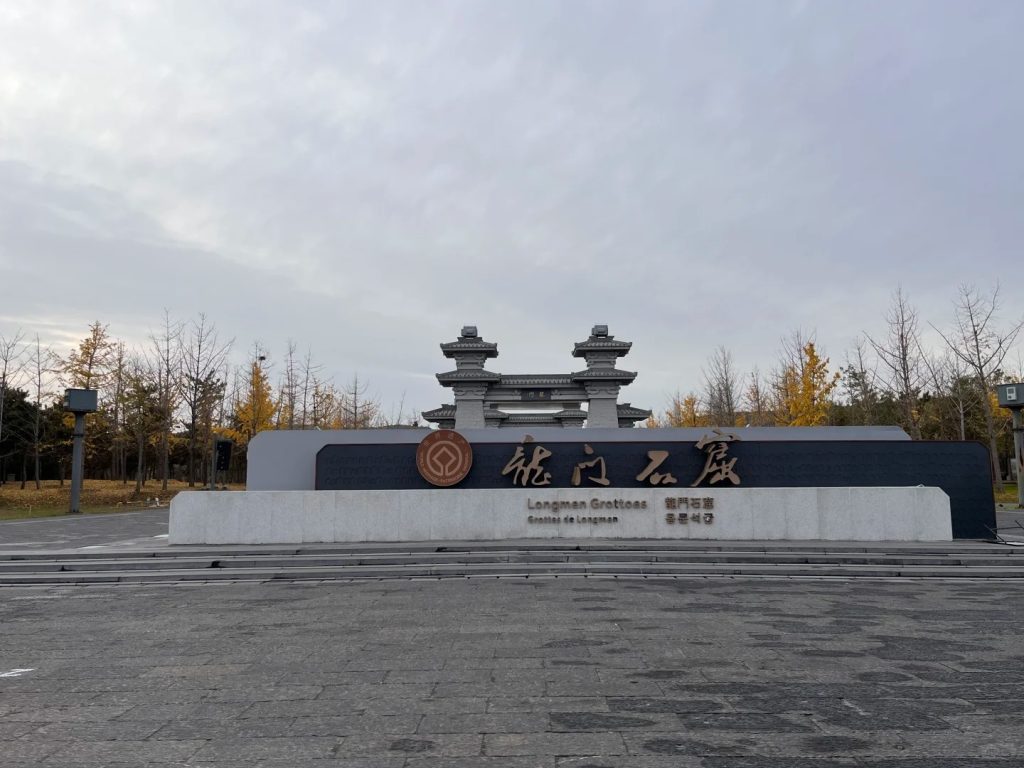
Essential Comfort Tips for Luoyang Longmen Grottoes
Wear Appropriate Clothing: Lightweight, breathable clothes in summer and layered clothing in spring or autumn make your visit comfortable.
Luggage Storage: Large bags should be left at your hotel or at lockers near the entrance, as only small backpacks are allowed inside.
Restricted Items: Avoid bringing drones, tripods, or large umbrellas, as they are often prohibited inside the grottoes.
Bring Water and Snacks: Staying hydrated and energized is important, especially during warmer months.
Use a Audio Guide or App: Audio guides provide detailed stories and history, enhancing your experience.If you join a reputable travel company, audio guides and detailed historical commentary are usually included, ensuring you don’t miss any highlights.
Nearby Attractions: The White Horse Temple in Luoyang and Longmen Grottoes are both located in Luoyang, offering a perfect opportunity to explore two of China’s most iconic cultural and historical sites in one trip.
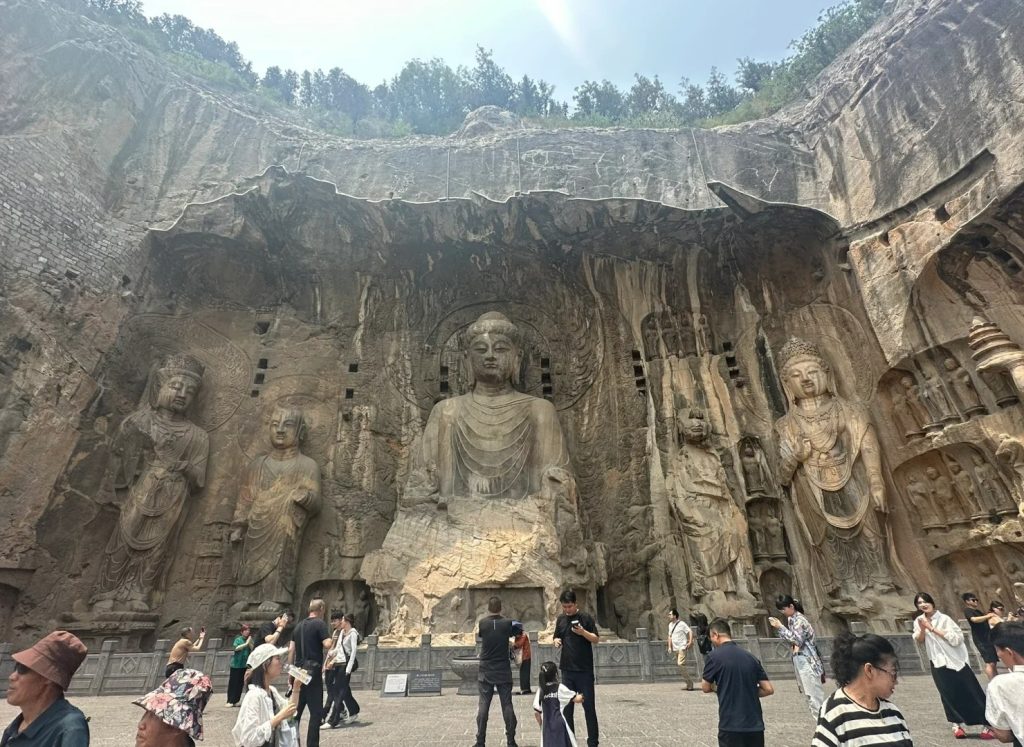
The Luoyang Longmen Grottoes are more than a tourist attraction—they offer a journey through China’s artistic and spiritual past. Each carving tells a story of devotion and craftsmanship, from Northern Wei elegance to the Tang Dynasty’s majestic Vairocana Buddha. Visiting here leaves a deep sense of awe and connection to history, making it a truly unforgettable experience.